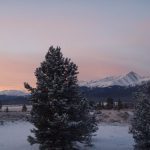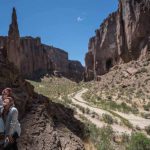My Greatest Weapons of Peace
 It has been fifteen years since I was a “natural blond” summiting Mount Massive and experiencing what it was like to be in a (real!) cloud for the first time. From New York City to around the world and back—I have been incredibly privileged to spend the first decade of my career as an educator and project manager for NGOs in Africa, Asia, and the Americas.
It has been fifteen years since I was a “natural blond” summiting Mount Massive and experiencing what it was like to be in a (real!) cloud for the first time. From New York City to around the world and back—I have been incredibly privileged to spend the first decade of my career as an educator and project manager for NGOs in Africa, Asia, and the Americas.
From my time as an RMS 5 student to my current work as a Founding Member of the Alumni Council (which will turn five next year), HMI’s guidance has been with me every step of the way. It’s been particularly educational to learn about “HMI the business” versus “HMI the school.” Even though it was like pulling teeth to get me to journal every week as a student so I could track my own progress, now I anxiously await reading quarterly Board reports that measure the impact of HMI.
Being an African and Indian from Brooklyn, I’ve always maintained at least one foot outside of the US. It was not until my 20s that having a multifaith, multicultural, multilingual and multinational background morphed from a delicate dance of dueling dichotomies to one of my greatest weapons of peace.
It was because of my decade-long international career in conflict zones (including with the United Nations) as well as my HMI experience that spawned a serendipitous yet mutual attraction to the Outward Bound Center for Peacebuilding. Not only do they challenge and inspire emerging leaders in divided societies to work together to build peace, they also seek to streamline peacebuilding models into all of Outward Bound’s programs—a tall order for the largest outdoor leadership school in the world.
It is regrettably common for wilderness programs to miss the fact that there is a distinct difference between being inclusive of people of color and just inviting them to participate. There has been little attention paid to how white privilege defines outdoor adventure and the worldviews that direct theory and practice must be radically revised and replaced by alternative paradigms. Through training workshops, wilderness retreats, and mentoring the next generation of adventurists, my current work with Outward Bound seeks to change just that.
inclusive of people of color and just inviting them to participate. There has been little attention paid to how white privilege defines outdoor adventure and the worldviews that direct theory and practice must be radically revised and replaced by alternative paradigms. Through training workshops, wilderness retreats, and mentoring the next generation of adventurists, my current work with Outward Bound seeks to change just that.
I am truly honored to be appointed as the Chair of the Outward Bound Center for Peacebuilding’s Young Leaders Council where I define the strategy, vision and direction for a group of emerging leaders who strive to enter the fields of peace, security, and wilderness education. I also aid in recruitment for their programs such as the upcoming Practicum in Experiential Peacebuilding in partnership with the University for Peace and Outward Bound Costa Rica.
Out of the 33 Outward Bound schools, I am thrilled to work directly with one of only three female Executive Directors, Ana Patel. Even as I continue to spread my wings, it has also been inspiring to collaborate with HMI parent, Pamela Kling Takiff, who serves fiercely on their board.
It’s been a large leap from student to teacher and it is because of my eye-opening experiences with HMI and Outward Bound that I seek to address how intercultural competencies (or lack thereof) can make or break a person’s experience in the wilderness. Mix a heavy spoon of strategic foresight, a little bit of fun, and a whole lot of tough love and you can move mountains—or summit them as the case may be.


 Semester 35: Winter in Leadville
Semester 35: Winter in Leadville
 HMI Gap 2015: Simple in Means, Rich in Ends
HMI Gap 2015: Simple in Means, Rich in Ends